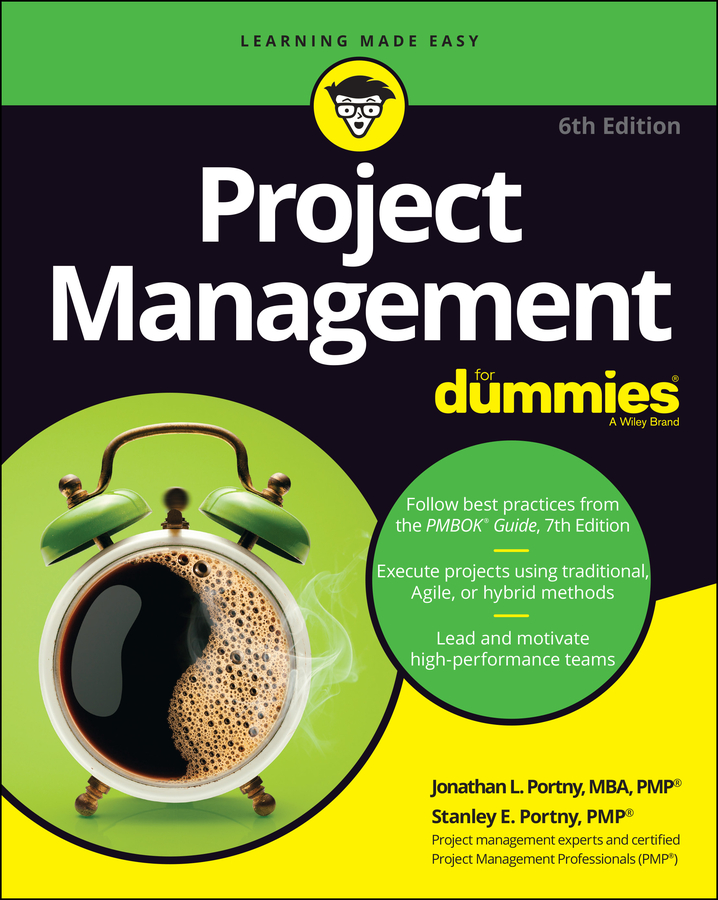Project start-up with PRINCE2
At the start-up point in the PRINCE2 project management method, you’re simply getting together enough information to check if the project is worth planning in detail and to provide key information for planning.
Key: Do this really fast.
Decision at the end: Shall we go on to full planning (initiation)?
-
Put key roles in place (minimum is Project Executive and Project Manager)
-
Produce the Project Brief (sketch of the project idea)
-
Make sure the Business Case looks viable – but only in outline
-
Make sure that the risks look acceptable – but, again, only in outline
-
Plan the Initiation Stage, allowing for risk analysis and the Business Case
Project planning with PRINCE2
Time spent properly planning is seldom wasted, but huge amounts of project time can be wasted from inadequate plans that aren’t thought through. Take the rights steps at the project initiation stage to ensure your PRINCE2 project turns out right.
Key: Balance the amount of planning against the need for control.
Decision at the end: Do we really want to commit to run this project?
-
Decide on the appropriate level of quality
-
Produce Product and Activity plans for the project
-
Product Product and Activity plans for the first stage after initiation
-
Perform a full risk analysis
-
Produce a full Business Case
-
Put simple controls and reporting procedures in place
-
Assemble the Project Initiation Document (PID)
Project stages in PRINCE2 project management
The products make superb milestones, and PRINCE2 projects, like any others, are about delivery, not about being busy. Make quite sure that products are to the specified quality.
Key: Check progress with the Product Checklist and also quality.
Decision throughout: Is everything on track or is there an exception?
-
Give work out to teams and monitor each team’s progress
-
Report progress regularly to the Project Board using the Highlight Report
-
Monitor the progress of the stage at set intervals
-
Adjust the running of the stage to ensure completion within set limits
-
Immediately report any exceptions to the Project Board if limits cannot be met
-
Look at any inbound Project Issues (problems and so on) and decide action
Exception plans with PRINCE2 project management
Exceptions in PRINCE2 projects, as in all projects need rapid but careful investigation. For example, there’s a big difference between overspending in a stage and early spending. PRINCE2 provides the method for dealing with exceptional circumstances.
Key: Find the underlying reasons, not just the superficial cause.
Decision at the end: Carry on (perhaps on a new plan) or stop the project?
-
Investigate rapidly and think through options
-
Report to the Project Board and get a decision on the way forward
-
Re-plan the rest of the stage if needed
-
Get approval to continue on the basis of the new plan
End Stage in PRINCE2 project management
In PRINCE2 projects, End Stage work is done by the Project Manager towards the end of the stage, followed by the Project Board’s meeting to decide whether or not to continue.
Key: Keep things as simple as you can. Don’t write huge reports.
Decision at the end: Authorise the next stage, or stop the project?
-
Check that the current stage work is complete, or almost complete
-
Plan the next stage, updating the Project Plan as necessary
-
Update the Business Case and Risk Log to reflect the latest information
-
Produce a report on the current stage for the Project Board
-
Hold the End Stage meeting of the Project Board (End Stage Assessment)
PRINCE2 project management project closure
The work at this point in a PRINCE2 project is done by the Project Manager towards the end of the last stage to prepare for the Project Board meeting which confirms closure.
Key: Double-check everything’s done, including any final testing.
Decision at the end: Is everything done and can you close the project?
-
Check everything is complete or, in the case of premature close, that as much as possible has been salvaged from the project to minimise wastage
-
Consider work needed in the organisation after the project (Follow-on Actions) including Post Project Review to measure benefits delivery
-
Report on the project, giving final cost, time, and quality information and commenting on the achievement of objectives
-
Consider and pass on the lessons learned (good and bad) from this project

